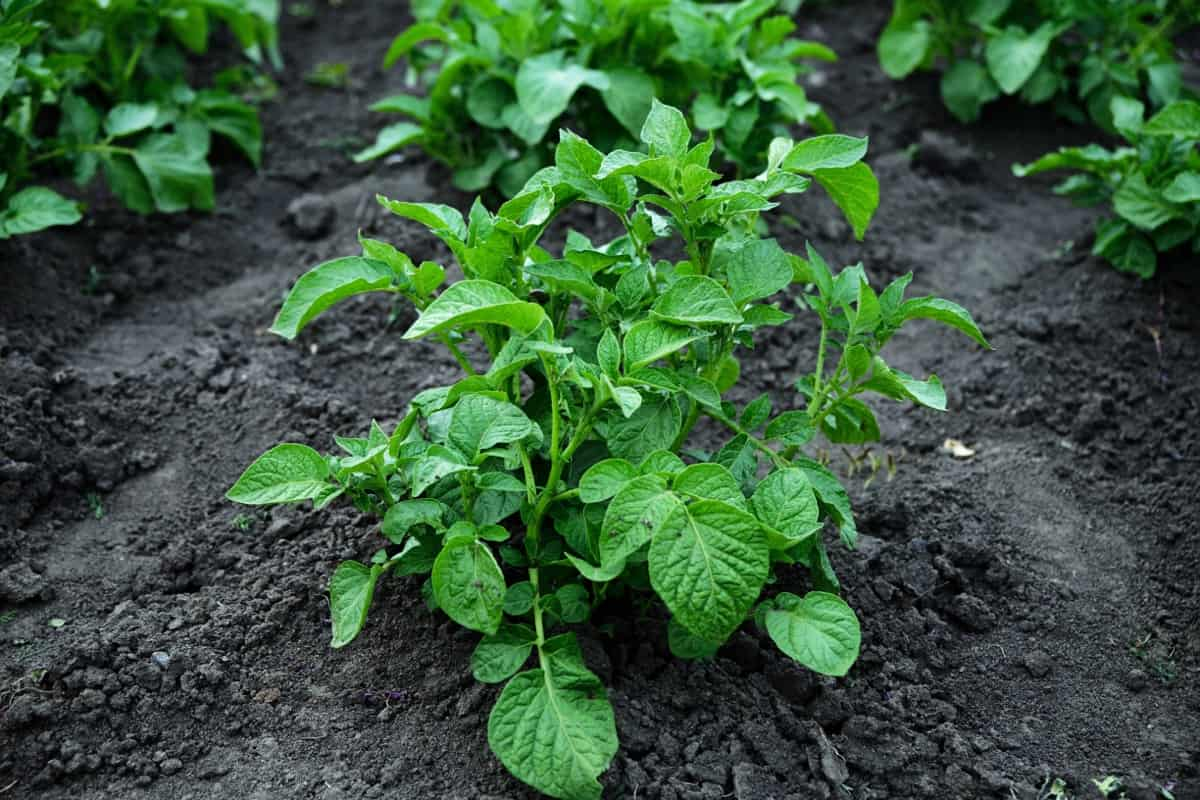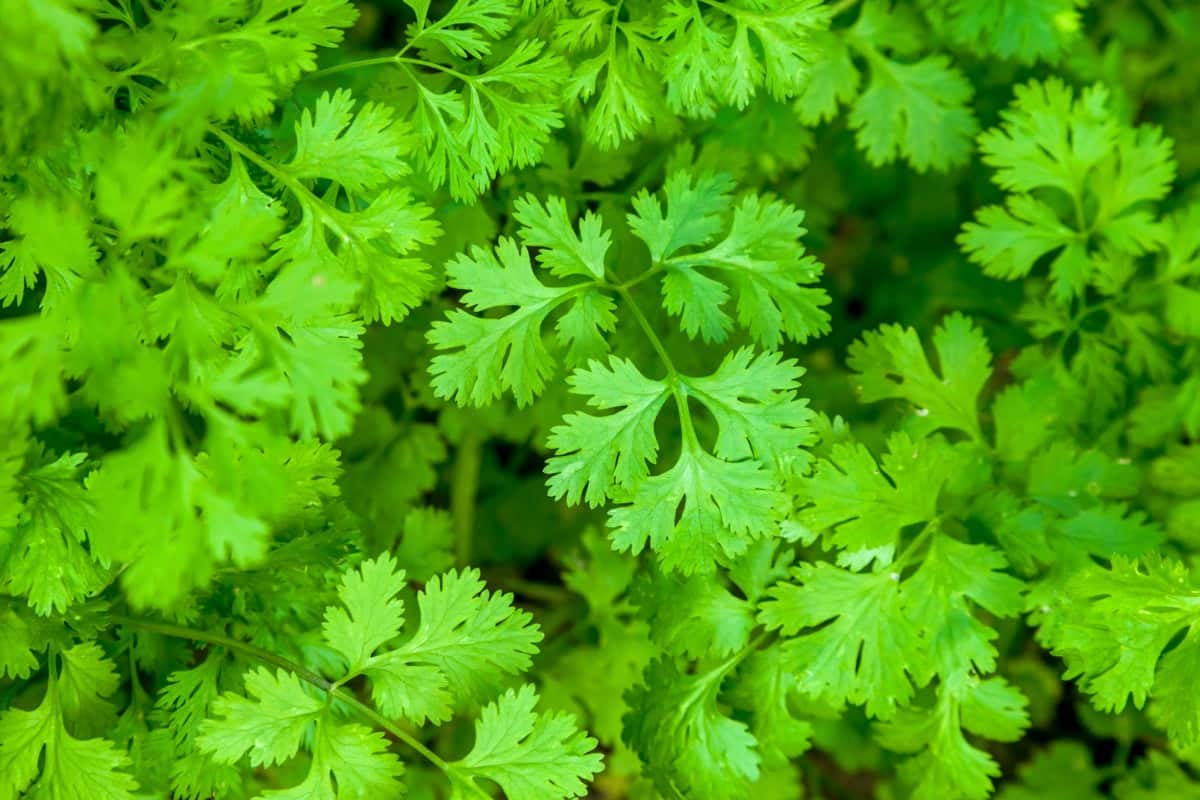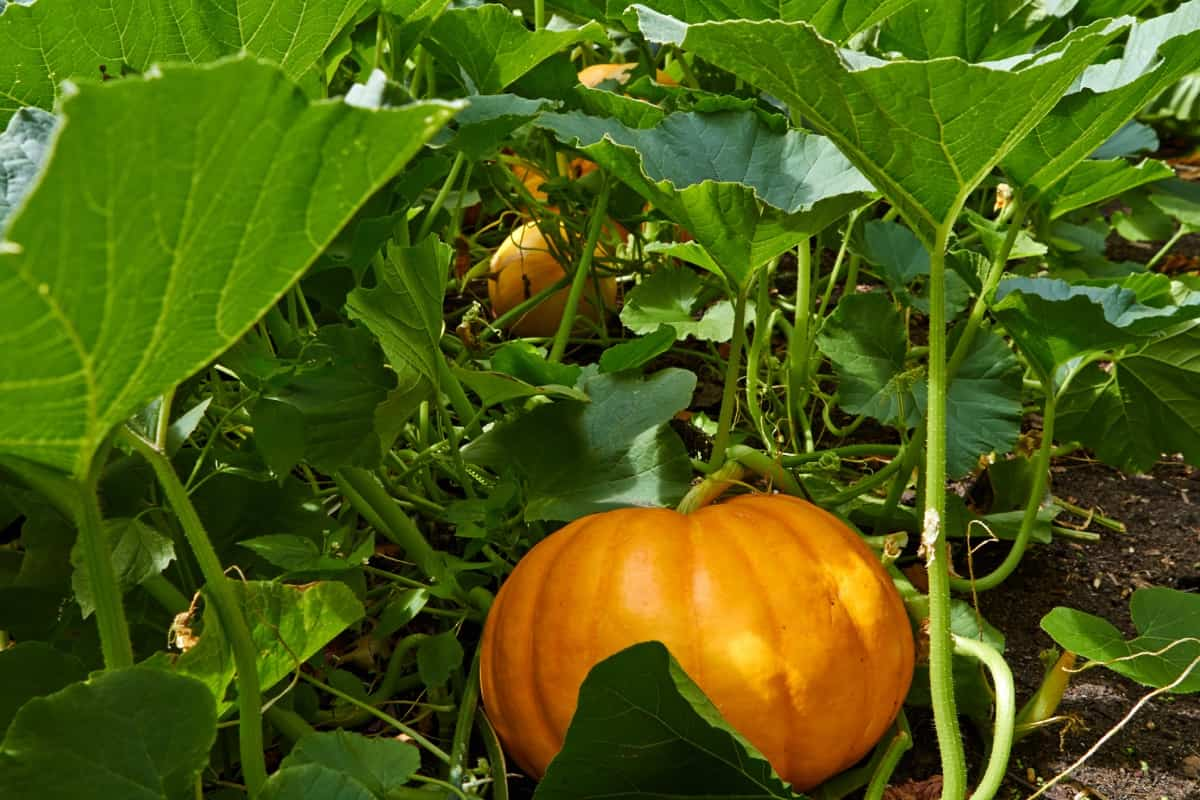Companion planting is a technique used to optimize the growth and yield of crops in a given area. Companion planting benefits for Potatoes include increased yields, improved pollination, and reduced likelihood of pests and diseases. You can create a healthy garden that supports your Potato crop and other nearby plants by choosing companion plants.

Plants that grow quickly and need plenty of sunlight should not be paired with Potatoes because they will compete for resources. Planting companions close to each other can also create a barrier against pests, preventing them from spreading easily between plants. By planting companion plants near Potatoes, you can increase yields, suppress pests, and improve the quality of your Potatoes.
Best and worst companion plants for Potatoes
Best companion plants for Potatoes
Legumes
These plants help to suppress weed growth, add nitrogen to the soil, and provide a supply of important vitamins and minerals to the Potato. Beans are a great choice for companion planting with Potatoes because they help to suppress weed growth. They also provide nitrogen to the soil, which is essential for Potato growth. Peas are another good choice for companion planting because they add nitrogen and potassium to the soil. Fava Beans are a good option because they provide protein and fiber, benefiting Potato health.
Cilantro
Cilantro is an excellent companion plant for Potatoes. It helps to deter pests, keeps the soil aerated, and adds a refreshing flavor to the Potato patch. Cilantro also has antibacterial properties, which help keep the Potato patch free of harmful bugs. Cilantro leaves are dark green, and the stem and flowers are bright yellow.
In case you missed it: Mint And Sage Companion Plants, Growing Tips

Cilantro is drought tolerant and grows well in warm climates, making it an ideal companion for Potatoes. To prevent Cilantro from taking over your Potato garden, space the plants at least 2 feet apart. Water the plants regularly but avoid flooding their roots; too much water can cause root rot. Fertilize with compost or manure before planting and every few weeks until harvest.
Nasturtiums
Nasturtiums are great companion plants for Potatoes because they help deter pests and improve the flavor and texture of the Potato. They also provide supplemental nutrients, such as nitrogen, potassium, and sulfur. Nasturtiums should be planted in a location with full sun, but they may also tolerate partial shade. Nasturtiums are a great companion plant for Potatoes. They help to deter pests and provide some protection against fungal diseases. Nasturtiums also attract beneficial insects, which can help to keep your Potato crops bug-free.
Chives
Chives are a great companion plant for Potatoes. They help to deter pests, add flavor and aroma to the soil around the Potato plants, and provide nectar for bees. When planting Chives around Potatoes, space them about 12 inches apart. Chives thrive in full sunlight and prefer well-drained soil. Chives can be grown from seed or transplanted, but they do best when grown as an annual in cooler climates. Chives are a great companion plant for Potatoes because they deter pests and help improve their growth.
Lettuce
Lettuce is a great companion plant for Potatoes because it helps to deter pests and improve the soil quality. Lettuce also provides shade, which can help keep the Potato plants cooler in summer and warmer in winter. Make sure to include Lettuce in your garden early in the season so it has time to establish itself before the Potatoes come up. Lettuce is a great companion plant for Potatoes. Lettuce helps to remove harmful chemicals from the soil and can help to repel pests. Lettuce also adds nutrients and moisture to the soil and can reduce weed growth.
Leeks
Leeks are a great companion plant for Potatoes because they help suppress weeds and improve soil fertility. Try planting them in groups of three or four to maximize their effect. Leeks are a great companion plant for Potatoes and can help to improve their growth and health. They provide pest protection, help to deter pests from attacking the Potato crop, and can help to improve the flavor of the Potato.
In case you missed it: Top 14 Lettuce Companion Plants, Planting Guide

Leeks grow quickly, so they will help to fill in any gaps in the Potato crop that may occur. Additionally, they provide pest protection for the Potato crop. Leeks have short stalks that make them less attractive to pests, and their leaves also contain chemical compounds that repel pests.
Thyme
Many companion plants can be used with Potatoes, but one of the best is Thyme. Thyme has several benefits for Potatoes, including helping to detangle their roots and preventing them from being attacked by pests. Additionally, Thyme can help to boost the flavor of Potatoes and improve their appearance.
When planting Thyme around Potatoes, space them evenly, so they don’t compete for space or nutrients. Thyme helps keep pests and diseases at bay, adds flavor and texture to the soil, and can provide some decoration to your garden. Thyme is a hardy perennial that grows up to 2 feet tall, making it a great choice for large gardens or containers.
Sage
Sage is a popular herb used for culinary purposes and as a natural insect repellent. It is a hardy plant that can be grown in most climates, and its leaves can be used fresh or dried for flavoring. Sage is a good companion plant for Potatoes because it helps deter pests and diseases.
The Sage leaves contain thymol, an antiseptic, antimicrobial, and antifungal agent. Additionally, Sage can help to improve the flavor of Potatoes. Sage plants are typically upright and bushy, with small leaves that are green on top and light purple or gray on the bottom. They produce small white flowers in late summer or early fall.
Parsley
Parsley is a great companion plant for Potatoes. It helps to deter pests and helps to improve the flavor of the Potato. Parsley also helps to keep the Potato foliage clean and free from weeds. Parsley is an excellent companion plant for Potatoes. It helps to deter pests, add flavor, and keep the Potato foliage clean. Parsley can be planted in multiple areas around the Potato garden to provide a wide range of benefits.
Chamomile
Chamomile is well-known for its mild flavor. Flowers are often used in herbal teas and as a source of flavor. Chamomile can grow up to 1 meter wide and has purple or white flowers about 3 centimeters wide. Chamomile is a gentle, drought-tolerant perennial that can be grown in most soils and climates. Chamomile flowers are daisy-like with white or light purple petals and are ideal for adding summertime beauty to the garden.
Chamomile is an ideal companion plant for Potatoes because both plants appreciate well-drained soil and a moderate amount of sunlight. Chamomile also relaxes the soil, making it easier to work with traditional fertilizers. Chamomile grows best in cool climates where it does not receive too much direct sunlight. It needs well-drained soil and can be planted in various locations, including gardens, patios, and even under trees. Chamomile should be fertilized every few months with a diluted fertilizer that contains nitrogen, potassium, and phosphorus.
Basil
Basil is a favorite companion plant for many vegetables, flowers, and fruits. It can help deter pests and attract beneficial insects. Basil is a hardy perennial herb that typically grows to 1 foot tall with broadly elliptical green leaves on the top and white below. The flowers are pink or purple and are borne in clusters at the tips of the stem. Basil prefers full sun but will tolerate partial shade. Water well during dry periods but avoid over-watering because Basil tolerates root rot. Basil is a good companion plant for Potatoes because it will help deter pests and diseases and has antibacterial properties.
Marigold
Marigold is a great companion plant for Potatoes. They help deter pests and provide an attractive addition to the garden. Marigolds also attract beneficial insects, which can help in the pollination process. When growing Potatoes in containers, include a variety of companion plants. Different companions will help regulate the soil temperature and provide nutrients while repelling pests.
In case you missed it: How to Grow Marigold Flowers from Seed to Harvest: A Planting Guide for Beginners

Marigolds are excellent companions for Potatoes because they help to regulate the soil temperature and provide nutrients. They also repel pests effectively, making them an ideal choice for container gardening. In addition, Marigolds are one of the few plants that will grow well in both full sun and partial shade environments.
Petunias
Petunias are versatile companion plants that can be planted near Potatoes to boost their health. Petunias help deter pests and promote growth, making them valuable to any garden. Petunias are attractive flowers that can brighten a space even during the gloomiest days. Potatoes are a great companion plant for Petunias.
They share similar pH requirements and can help to ward off pests. Petunias also provide nectar that helps to attract beneficial insects, such as pollinators, which will help to keep your Potato plants healthy. Not only do they add color to the garden, but they also help reduce pests and diseases that can affect Potatoes. Petunias also have antibacterial properties, which can help keep your Potato crop healthy.
Worst companion plants for Potatoes
Pumpkin
A few plants should be avoided when planting Potatoes near each other. One of these is the Pumpkin. Pumpkin vines can easily outcompete and shade the Potatoes, preventing them from growing properly. Additionally, Pumpkin leaves contain a toxin that can harm potato plants. If you must plant Potatoes next to a Pumpkin, keep their distances close and monitor their growth closely.
In case you missed it: 7 Houseplants That Love Bottom Watering: A Beginners Guide

Sunflowers
Potatoes and Sunflowers don’t get along well together. The tuberous root system of the Potato digs up and competes with the flower heads of the Sunflower for nutrients, water, and sunlight. As a result, Potatoes can be stunted or even killed by Sunflower plants. Additionally, the leaves of a Potato plant can uptake too much nitrogen from the soil, leading to Potato Leaf Blight.
Fennel
Fennel can be invasive and may crowd out other plants. Because it can stunt the growth of other plants, Fennel should not be planted near Potatoes.
Zucchini
The two plants compete for space and water, and if Potatoes are planted too close to the Zucchini, they will stunt the Zucchini’s growth, and vines will become twisted and sparse. Additionally, Potatoes spread weed seeds along with their roots, which can compete with the Zucchini for nutrients and water.
In case you missed it: How to Grow Zucchini from Seed to Harvest: Check How this Guide Helps Beginners

Conclusion
The essential thing you can do for your garden is to choose the right companion plants. Not only will this help you get the best yields from your crops, but it will also make gardening more enjoyable. Companion planting is a great way to increase your garden’s productivity and improve your crops’ quality.
This article provides information about some of the best companion plants for Potatoes. You can help improve their health and yield by planting these plants around your Potatoes. If you want to add some extra nutrients to your Potato crop, consider planting these plants next to them.
- Growing Gold: Essential Techniques for Planting Pineapples
- How to Make Kalanchoe Plant Bushy: Home Remedies and Solutions
- 11 Reasons Why Your Gardenia is Not Blooming: Home Remedies and Solutions
- Eco Elegance: The Guide to Designing a Drought-Tolerant Landscape
- Gardening on a Slope: Strategies for Hillside Landscaping
- Nourish and Flourish: Top Organic Mulches for Thriving House Plants
- Everything You Want to Know about Indian Mogra Flower: Discover Uses and Growing
- Green Thumb Success: Expert Tips for Cultivating Greenhouse Pumpkins All Year Round
- Maximize Growth & Flavor: The Ultimate Guide to Companion Planting in Herb Gardens
- How to Control Rhododendron Problems Naturally: Home Remedies and Organic Ways to Fix Them
- Natural Magic: The Remarkable Benefits of Cinnamon for Plants
- Best Steps to Revive Dying Tulip with Natural and Organic Treatment
- 10 Reasons Why Your Angel Trumpet is Not Blooming: Remedies and Treatment
- How to Fix Periwinkle Leaf and Flower-Related Problems: Natural Remedies and Solutions
- How to Fix Zinnias Leaf and Flower Problems: Discover Natural and Home Remedies
- Organic Steps to Induce Lemon Tree Flowers: A Comprehensive Guide
- Bloom Booster: Crafting the Perfect Homemade Bougainvillea Fertilizer
- Optimizing Growth: A Guide to Applying NPK Fertilizer for Potted Plants
- 10 Best Homemade Fertilizers for Rubber Plant: DIY Recipes and Application Method
- How to Boost Female Pumpkin Flowers: Effective Steps for More Flowers and High Yields
- Transform Your Indoor Garden: Top Benefits of Pink Salt for Houseplants
- 10 Best Homemade Fertilizers for Peacock Plants (Calathea): Easy DIY Guide
- Unlock Blooms: 9 Reasons Why Your Potted Chrysanthemum is Not Blooming
- 8 Reasons Why Your Potted Hibiscus is Not Blooming: Fix it with Simple Solutions
- Unlock Blooms: 9 Key Reasons Your Potted Frangipani Won’t Flower
- 10 Reasons Why Is My Ice Plant Not Blooming: Remedies and Treatment
- 10 Reasons Why My Potted Hydrangea Not Blooming: Treatment and Remedies
- 10 Reasons Why is My Wisteria Not Blooming: Remedies and Treatment
- 10 Reasons Why is My Goldfish Plant Not Blooming: Remedies and Treatment
- Maximize Your Space: Ultimate Guide to Balcony Gardening with Grow Bags
- 10 Reasons Why Your Iris is Not Blooming: Remedies and Treatment
- 10 Reasons Why Your Anthurium Plant is Not Blooming: Treatment and Remedies
- 10 Reasons Why Your Aquaponic Plants Are Not Flowering: Remedies and Treatment
- 10 Reasons Why Your Agapanthus is Not Flowering: Remedies and Treatment
- Ultimate Guide to Brown Turkey Fig: Steps to Growing Brown Turkey Figs
- How to Grow Acai Berry: Propagation, Planting, and Care